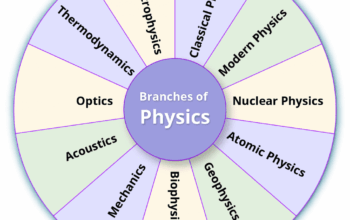As global warming continues to be a pressing contemporary issue, scientists and researchers are investigating myriad innovative approaches to predict its trajectory and impacts. One such pioneering exploration is being conducted at CERN, where the use of lasers in a cloud chamber is showcasing intriguing potential to shed light on climate phenomena. This article delves into the interplay between laser technology, particle physics, and climate science, elucidating how advances in these fields may collectively inform our understanding of global warming.
The foundation of this inquiry lies within the realm of cloud chambers, devices originally designed to visualize the trajectories of charged particles. By supercooling a saturated vapor, these chambers enable the observation of particle interactions as they ionize the vapor, allowing researchers to literally see the paths taken by these particles. Recent innovation in this field involves the integration of laser technology, which has begun to facilitate novel methods of atmospheric simulation. The implications of this marriage of technologies extend beyond mere academic curiosity; they bear the potential to significantly contribute to climate modeling.
When we consider global warming, we must recognize the role of cloud formation and atmospheric particles, or aerosols, which greatly influence climate systems. Aerosols can exert both warming and cooling effects depending upon their composition and interaction with sunlight. Leveraging lasers, CERN researchers aim to mimic and analyze how these aerosols behave in various atmospheric conditions. This novel approach may provide clearer insights into cloud microphysics, a key factor determining climate feedback processes.
CERN’s laser application hinges on its ability to generate high-energy photons that interact with atmospheric gases and aerosols. By creating an artificial simulation of different atmospheric scenarios, scientists can observe how alterations in aerosol concentration affect cloud formation and, consequently, climate. This allows for a more precise examination of cloud properties such as albedo—the measure of reflectiveness—impacting Earth’s energy balance. The interplay between reflection, absorption, and scattering of solar radiation by cloud particles is a critical aspect of climate dynamics and one that this research seeks to quantify more accurately.
Beyond the immediate observations within the cloud chamber, the broader implications of this research extend into the realms of climate modeling and prediction. Traditional models often struggle to accurately incorporate the multifaceted influences of aerosols on climate systems. However, insights gained from laser-enhanced cloud chamber observations could inform and refine these models, potentially resulting in more robust predictions regarding the rate and extent of global warming. For instance, understanding how variations in aerosol types and concentrations can alter cloud albedo may lead to better estimations of local and global temperature changes.
Moreover, the predictive capabilities of lasers can be enhanced through machine learning techniques. As vast amounts of data are collected from cloud chamber experiments, algorithms can be trained to establish correlations and identify patterns in aerosol behavior, cloud formation, and climate responses. Such a data-driven approach could markedly improve our capacity to anticipate future climatic conditions based on existing atmospheric compositions and behaviors. Here, interdisciplinary collaboration becomes paramount: physicists, climatologists, and data scientists must converge to synthesize their findings in a cohesive manner.
However, it is crucial to acknowledge the limitations intrinsic to such methodologies. While the predictability derived from laser-enhanced observations presents a promising avenue, the complexity of climate systems inevitably introduces uncertainties. Climate operates on a myriad of feedback loops and interactions that may not always be captured through controlled experimentation. Therefore, while lasers may contribute significantly to our comprehension of a key component of climate systems, they are but one tool among many required to tackle the multifaceted challenges of global warming.
In evaluating the potential of lasers to predict global warming, it becomes evident that their application within CERN’s cloud chamber domain may catalyze an uplift in the overall rigor of climate science. The enhanced ability to simulate atmospheric conditions provides a clearer window to scrutinize the intricacies of aerosol-cloud interactions, shedding light on how these relationships modulate climate. This understanding is essential for developing effective climate mitigation strategies and policies, as it further elucidates the forces driving temperature elevations and extreme weather patterns.
As CERN continues to unravel the complexities of climate science through innovative approaches like laser utilization, the research landscape is likely to evolve. The implications stretch beyond mere academic discourse; they have the potential to inform policymakers as they grapple with the impending challenges of climate change. The insights drawn from such rigorous scientific endeavor can serve as foundational knowledge for crafting responsive strategies to mitigate global warming.
In conclusion, while lasers alone are not the panacea for predicting global warming, their integration into cloud chamber experimentation serves as a compelling testament to the innovative spirit of science. The confluence of particle physics and climate research symbolizes an unyielding pursuit of knowledge, where curiosity and technology coalesce to tackle one of humanity’s most formidable challenges. It is imperative that ongoing collaborative efforts strive to elucidate the interactions that govern our climate and work towards a sustainable future.










